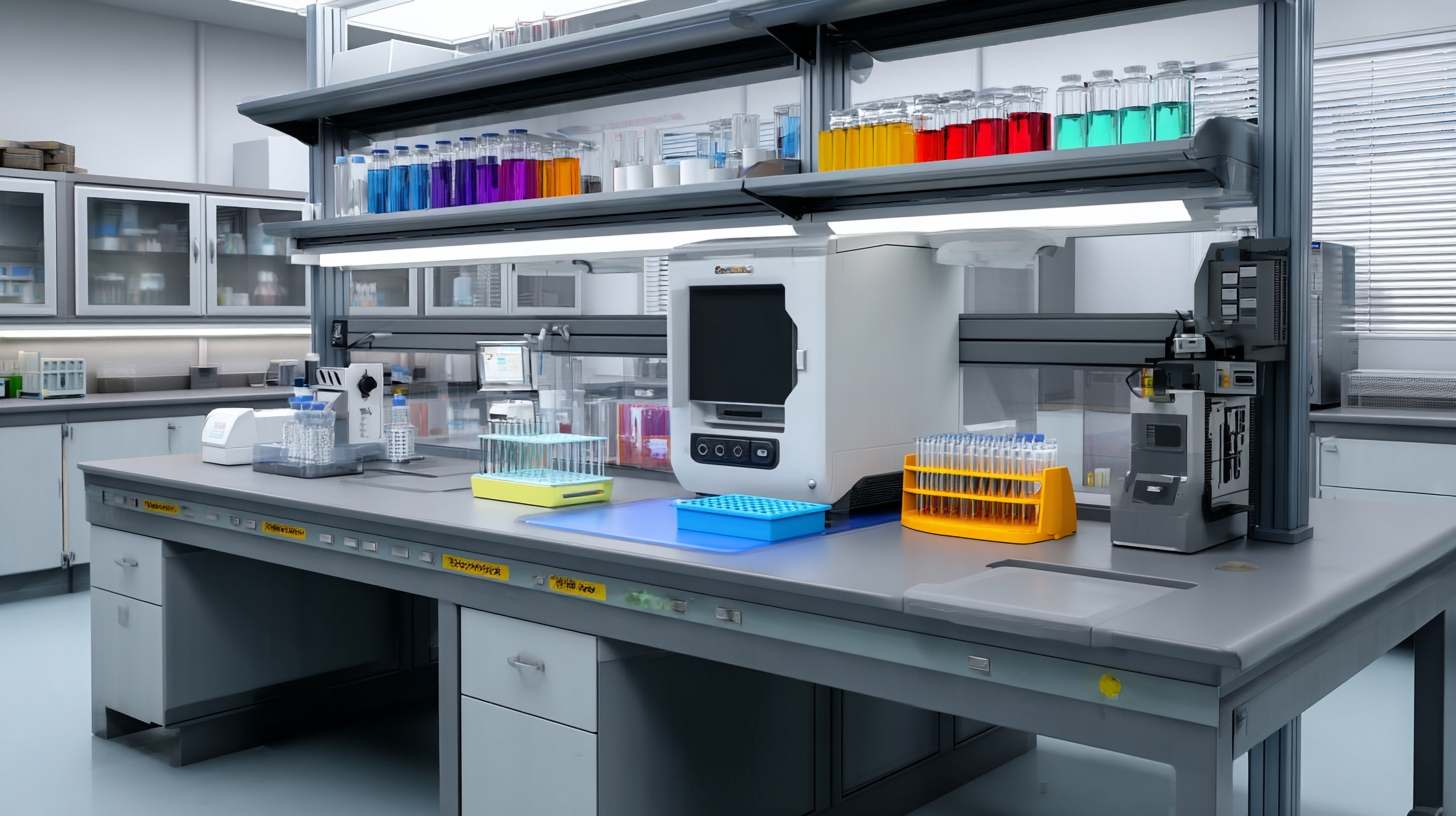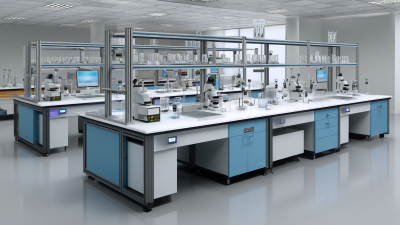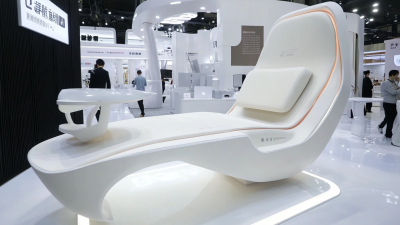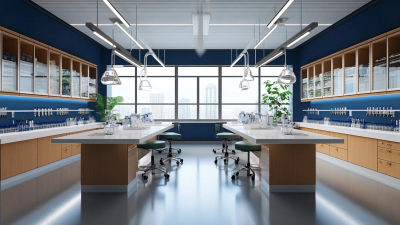 Setting up an efficient lab workbench is crucial for any researcher aiming to achieve optimal outcomes in their experiments. A well-organized lab workbench not only enhances productivity but also streamlines workflow, allowing scientists to focus on innovation rather than distractions. This "How to" guide delves into the essential elements of maximizing efficiency in your lab workbench setup. From strategic organization of tools and supplies to effective space utilization, readers will learn how to create an environment conducive to high-quality research. By prioritizing both functionality and accessibility, researchers can minimize errors and save valuable time, leading to more successful experiments and breakthroughs. Whether you're a seasoned professional or a novice in the lab, implementing these strategies will ensure that your lab workbench serves as a powerful ally in your research endeavors.
Setting up an efficient lab workbench is crucial for any researcher aiming to achieve optimal outcomes in their experiments. A well-organized lab workbench not only enhances productivity but also streamlines workflow, allowing scientists to focus on innovation rather than distractions. This "How to" guide delves into the essential elements of maximizing efficiency in your lab workbench setup. From strategic organization of tools and supplies to effective space utilization, readers will learn how to create an environment conducive to high-quality research. By prioritizing both functionality and accessibility, researchers can minimize errors and save valuable time, leading to more successful experiments and breakthroughs. Whether you're a seasoned professional or a novice in the lab, implementing these strategies will ensure that your lab workbench serves as a powerful ally in your research endeavors.
Assessing your current lab workbench setup is the first crucial step toward maximizing efficiency in your research outcomes. Take a comprehensive inventory of your workspace, evaluating not only the physical arrangement but also the tools, materials, and technologies available to you. Are essential items easily accessible, or do you often waste time searching for them? Creating a workspace that minimizes clutter and organizes equipment logically can greatly enhance productivity. Consider factors such as the positioning of frequently used tools, the layout of work areas, and the incorporation of storage solutions to streamline processes.
In addition to physical layout, it’s vital to assess the workflows that occur within the lab. Examine how tasks are performed and identify any bottlenecks or redundant steps that may hinder progress. Engaging in conversations with lab members can provide valuable insights into inefficiencies that may not be immediately apparent. By actively seeking feedback and remaining open to adjustments, you can foster a culture of continuous improvement. Ultimately, an optimal workbench setup should not only support your current research needs but also adapt to future projects, ensuring sustained success in your scientific endeavors.
This bar chart illustrates the efficiency ratings of various lab workbench setups based on specific criteria such as space utilization, accessibility, organization, and equipment availability. The ratings are based on a scale of 1 to 10, with 10 representing the highest efficiency.
When setting up a lab workbench for optimal research outcomes, selecting the right equipment and tools is critical. Researchers must focus on their specific needs to ensure their workspace allows for maximum efficiency and productivity. High-quality instruments, such as precision analytical devices and ergonomic workstations, can significantly impact the quality of research. Investing in technology that integrates seamlessly with existing systems will reduce downtime and enhance workflow.
Moreover, it is essential for researchers to consider modular and versatile equipment that can adapt to various projects. Choosing tools that accommodate different experimental setups not only saves space but also supports diverse research needs. By leveraging technology that simplifies data collection and analysis, researchers can streamline their processes and enhance their overall research effectiveness. This careful selection and arrangement of lab equipment will ultimately lead to more reliable and impactful research outcomes.

Organizing materials and supplies efficiently on your lab workbench is crucial for maximizing accessibility and enhancing research productivity. A well-structured workspace minimizes time spent searching for tools and reagents, allowing researchers to focus more on experiments and results. Consider categorizing supplies into clearly labeled sections based on their use—such as reagents, tools, and safety equipment. Using containers, racks, and drawer organizers can help maintain this organization while keeping the workbench clutter-free.
Moreover, strategically placing frequently used items within arm’s reach can significantly streamline workflows. For instance, positioning pipettes, common reagents, and notebooks near your primary work area ensures that essential tools are readily available, reducing interruptions during critical experiments. Regularly assessing the organization and flow of materials also contributes to ongoing improvements, ensuring that the workspace adapts to evolving research needs. By fostering an accessible and efficient environment, researchers can optimize their lab's potential for innovative outcomes.
Optimizing workflow in laboratory settings is essential for enhancing research outcomes. By adopting Lean principles, such as the 6S (Sort, Set in order, Shine, Standardize, Sustain, and Safety) methodology, labs can reclaim valuable time and space. These strategies not only streamline operations but also foster an environment where productivity can flourish.
 Implementing systematic organization reduces clutter and enhances efficiency, allowing researchers to focus more on their experiments and less on logistics.
Implementing systematic organization reduces clutter and enhances efficiency, allowing researchers to focus more on their experiments and less on logistics.
The integration of artificial intelligence (AI) into laboratory processes further amplifies these optimizations. AI can automate routine tasks, facilitate data analysis, and enhance decision-making, thus alleviating the burden on researchers. As biopharma operations embrace AI, the transformation is profound—enabling quicker, more accurate research outcomes while simultaneously addressing common frustrations. By incorporating AI-driven tools, labs can create a synergistic workspace that maximizes resources and minimizes errors, paving the way for innovative breakthroughs in healthcare and science.
In today’s fast-paced research environment, leveraging technology is essential for enhancing lab management and productivity. Software solutions, such as laboratory information management systems (LIMS) and electronic lab notebooks (ELN), streamline data organization and access, enabling researchers to focus more on experimentation rather than paperwork. These tools facilitate real-time collaboration by allowing multiple users to input and retrieve data, which accelerates the research process and minimizes errors associated with manual record-keeping.
Additionally, integrating automation technologies, such as robotic systems and data analytics platforms, can further optimize lab workflows. By automating repetitive tasks like sample handling and analysis, labs can significantly reduce human error and improve throughput. Moreover, data analytics software can provide insightful trends and predictions that guide researchers in making informed decisions, ultimately leading to more effective research outcomes. Utilizing technology not only enhances productivity but also fosters innovation, ensuring that laboratories remain at the forefront of scientific discovery.
| Lab Equipment | Functionality | Technology Used | Efficiency Rating | Recommended Software |
|---|---|---|---|---|
| Microscope | Cell Analysis | Digital Imaging | 9/10 | ImageJ |
| Centrifuge | Sample Separation | Automatic Speed Control | 8/10 | LabArchives |
| Pipette | Liquid Handling | Electronic Dispensing | 7/10 | Pipette Tracker |
| Spectrophotometer | Concentration Measurement | UV-Vis Detection | 9/10 | SoftMax Pro |
| Refrigerator | Sample Storage | Temperature Control | 8/10 | LabCollector |






